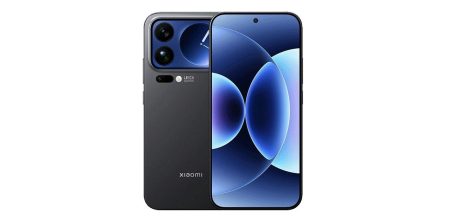The F6 Pro is equipped with support for Wi-Fi 6 and is set to also support Wi-Fi 7 in the future.
Connectivity
Plays a pivotal role in modern smartphones, and the chipsets in question provide exceptional connectivity features. The Snapdragon 8 Gen 2, for instance, seamlessly incorporates support for lightning-fast multi-gigabit 5G connectivity, cutting-edge Wi-Fi 6E and Wi-Fi 7 capabilities in the near future. Moreover, it boasts Bluetooth 5.3, NFC, and GPS functionalities, offering users a comprehensive range of connectivity options that will undoubtedly enhance their smartphone experience.
Qualcomm’s hardware is compatible with the popular Wi-Fi 4/5/6 standards as well as the newer Wi-Fi 7. This ensures that the device is equipped to handle current and upcoming advancements in wireless technology, providing users with a versatile and future-proof connectivity solution.
When it comes to frequency bands, both Wi-Fi 5 and Wi-Fi 6e operate in the 2.4 GHz and 5 GHz bands. However, Wi-Fi 6 introduces support for the 6 GHz band (802.11ax/Wi-Fi 6E) to alleviate congestion in existing bands. Both standards support MU-MIMO, but Wi-Fi 6 goes further by enhancing capabilities and efficiency.
The benefits of Wi-Fi 6E and its impact on the average user
The Wi-Fi 6E standard operates on the 2.4GHz and 5GHz bands, and now includes the newly added 6GHz band. With an additional 7 channels spread across a 160Hz bandwidth and a supported router, you can experience a peak bandwidth of over 800Mbps. This translates to a significant advantage for those who heavily rely on popular streaming services like Disney+, Netflix, and YouTube, where higher bandwidth is crucial for a seamless streaming experience.
Top benefits:
- Less congestion and interference: Because Wi-Fi 6E operates on a higher frequency band, which results in less congestion and interference from other devices. This translates to faster and more stable connections, allowing users to enjoy seamless streaming, gaming, and downloading experiences. The increased bandwidth also supports more devices simultaneously, making it ideal for households with multiple smart devices and IoT devices.
- Geater capacity and lower latency: Enables users to fully immerse themselves in seamless video calls and online meetings. Applications such as video conferencing and online gaming require a reliable and low-latency connection, and Wi-Fi 6E delivers exactly that. With this new advancement, users can look forward to minimized delays, faster response times, and an all-around improved online experience.
- Improved range: its ability to operate on the 6 GHz frequency band, Wi-Fi signals can penetrate walls and obstacles better, ensures more consistent coverage throughout the entire house or office space. This means users can enjoy stable and high-speed connections, even in areas that were previously difficult to reach with standard Wi-Fi.
Here are some of the routers that officially support Wi-Fi 6E technology:
- Asus GT-AXE16000
- TP-Link Archer AXE300
- MSI Radix AXE6600
- Netgear Nighthawk RAXE500
- NETGEAR Nighthawk Wi-Fi 6E Router (RAXE300)
- Xiaomi Router 10000
- Banana Pi BPI-R4
How to enable Wi-Fi 6E Support?
First, you should make sure to check the following tips:
- Make sure that your router is fully WiFI-6E Compatible – Most routers are WiFi-6 compatible and will automatically switch to the band with less interference.
- Please verify the settings on your router to determine whether there is an option to manually switch to the 6GHz band. If you are unable to locate this option, it is likely that your router does not support it.
Wi-Fi 7 connectivity – what to expect?
Additional 320 MHz of bandwidth
The 2.4 GHz and 5 GHz frequency bands are congested and limited because they are unlicensed spectrums. Consequently, current Wi-Fi networks struggle to provide a high-quality service for emerging applications such as VR/AR. To tackle this challenge and achieve better throughput, the new Wi-Fi 7 will incorporate support for the 6 GHz frequency band. Moreover, it will introduce new bandwidth modes including contiguous 240 MHz, non-contiguous 160+80 MHz, contiguous 320 MHz, and non-contiguous 160+160 MHz. These enhancements will bring about a significant improvement in the overall performance and capability of Wi-Fi networks.
MRU
In Wi-Fi 6, each user is only allowed to send or receive frames on the allocated RUs which limits spectrum resource scheduling flexibility. Wi-Fi 7 addresses this by introducing a mechanism that allows multiple RUs to be allocated to a single user, enhancing spectrum efficiency. To ensure a balance between implementation complexity and spectrum utilization, Wi-Fi 7 imposes restrictions on RU combinations. Specifically, smaller with fewer than 242 tones can only be combined with other small RUs, and large RUs (with 242 tones or more) can only be combined with other large RUs. However, small RUs and large RUs can be combined.
Multi-Link Mechanism
In order to fully maximize the potential of existing spectrum resources, it is imperative for the industry to promptly implement new mechanisms for spectrum management, coordination, and transmission across the 2.4 GHz, 5 GHz, and 6 GHz frequency bands. The 802.11 Working Group has put forth a comprehensive framework that encompasses cutting-edge technologies such as multi-link aggregation, enhanced MAC architecture, multi-link channel access, and multi-link transmission. These advancements pave the way for a more efficient and seamless utilization of the available spectrum, heralding a new era of connectivity and performance.
Multi-AP Coordination
Multi-AP coordination can be implemented in various methods, such as Coordinated Orthogonal Frequency Division Multiple Access (C-OFDMA), Coordinated Spatial Reuse (CSR), Coordinated Beamforming (CBF), and Joint Transmission (JXT).
Within the current 802.11 protocol framework, there is limited coordination between APs. Key WLAN functions, including automatic radio calibration and intelligent roaming, are typically vendor-specific features. Multi-AP coordination is designed to enhance channel selection and balance loads across APs to achieve efficient utilization and equitable allocation of radio resources. In the realm of Wi-Fi 7, coordinated scheduling among multiple APs encompasses inter-cell coordinated planning in both time and frequency domains, inter-cell interference coordination, and distributed MIMO. These advancements diminish interference between APs and significantly enhance the utilization of air interface resources.
Testing Wi-Fi 6 Connectivity.
According to our test, when positioned 1 meter away from our Banana Pi R3 Mini router, we had no trouble reaching the 1Gbps ISP cap on a fiber internet connection. At greater distances, you can expect an average speed of 300-900Mbps.
Although the absence of eSIM support may be disheartening, We are curious to know when iSIM will be made available.
Similar to eSIM, iSIM (Integrated SIM) was developed by Qualcomm. This technology refers to an IP Multimedia Services Identity Module integrated into a device’s hardware, allowing it to connect to a cellular network without the need for a physical SIM card or a soldered eSIM (embedded SIM) in a printed circuit. The module contains parameters for identifying and authenticating the user to the network. It represents a significant advancement in SIM card technology, providing enhanced flexibility and convenience for device connectivity.
The absence of eSIM support in Xiaomi’s Poco F6 Pro may prove to be extremely disappointing for prospective buyers. This exclusion could present a substantial drawback for customers who appreciate the convenience of seamlessly switching between mobile providers, all without the hassle of having a physical SIM card delivered to their residence.
It is particularly disheartening considering we are talking about a premium flagship level smartphone priced at $500 and above. We are aware that Qualcomm has already integrated iSIM support in their SoC. However, Xiaomi’s latest HyperOS does not currently incorporate this feature. Nevertheless, we eagerly look forward to any potential updates that Xiaomi wil introduce in the near future.










